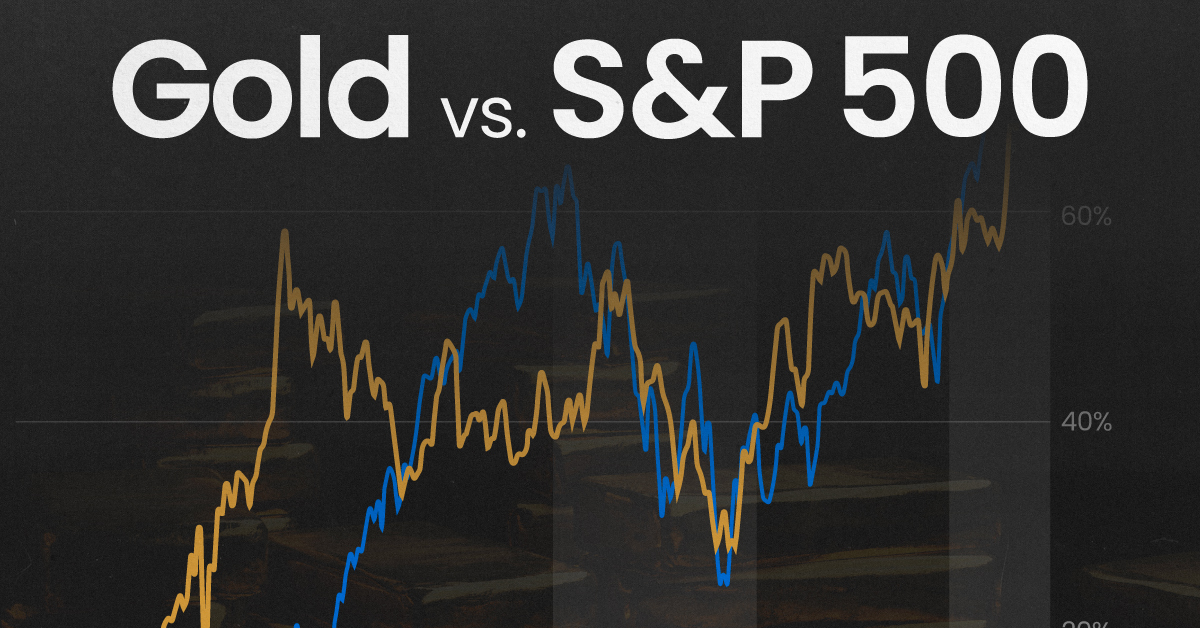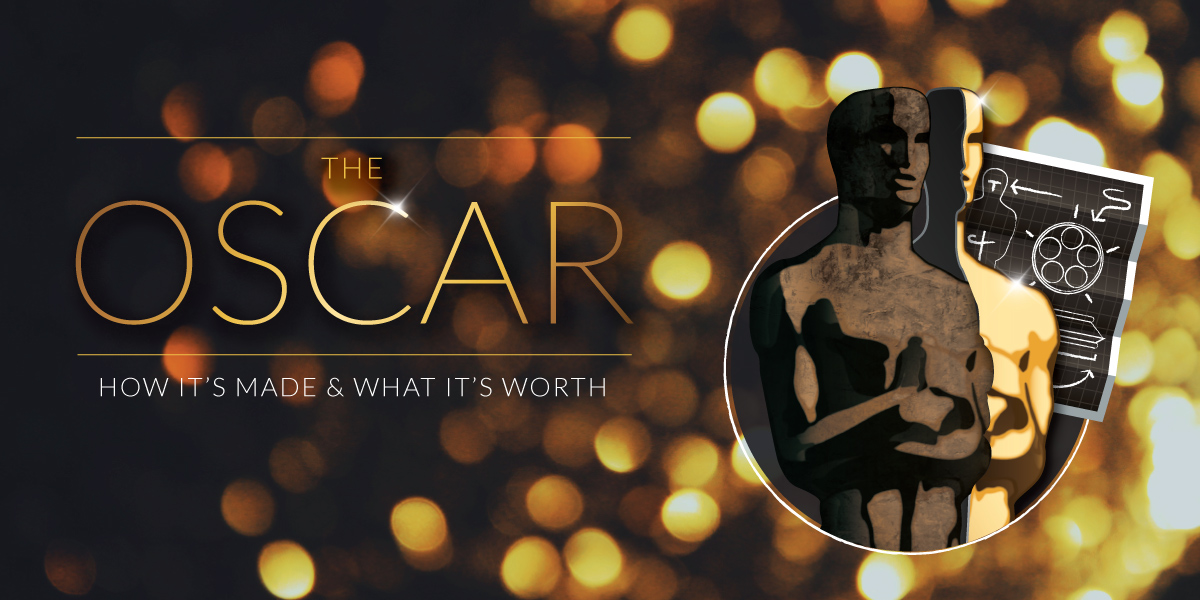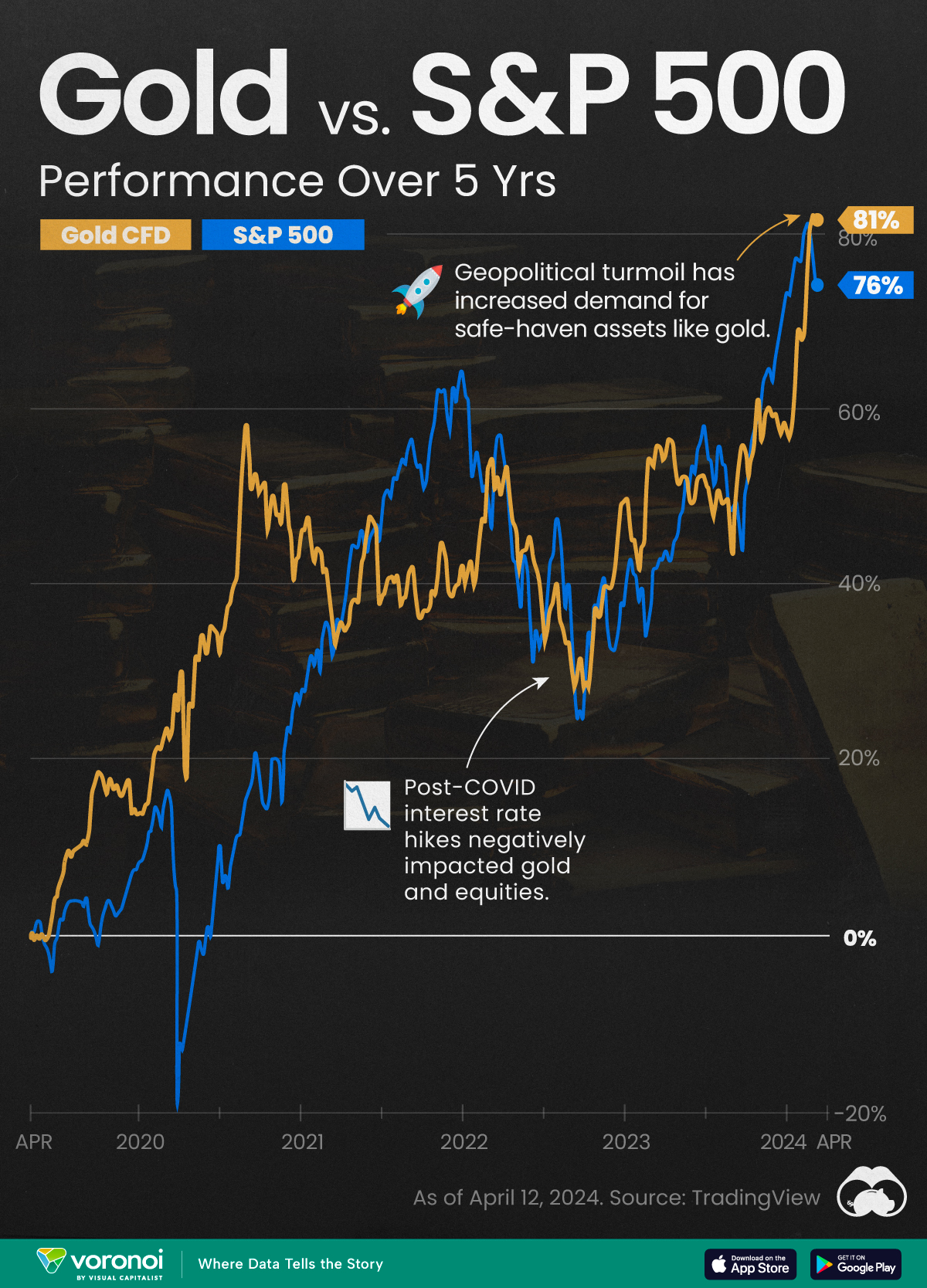Gold
The Oscar: How It’s Made, and What It’s Worth

The Oscar: How It’s Made, and What It’s Worth
Presented by: JMBullion
The “Academy Award of Merit”, more commonly known as an Oscar, has been awarded since 1929. The modern Oscar stands 13.5 inches tall with a weight of 8.5 lbs, and it is made of solid bronze with a electroplated coating of 24-karat gold.
However, the world’s most beloved trophy wasn’t always made this way. Here’s the evolution of how an Oscar is made, and what people are willing to pay to get their hands on one.
The Evolution of the Award
1928: The original Oscar was sculpted by Los Angeles artist George Stanley. The design was based on sketches by MGM art director Cedric Gibbons, who came up with the idea of a knight standing on a reel of film gripping a crusader’s sword.
1929: The first ever Oscar was presented at the initial awards banquet on May 16, 1929 to Emil Jannings for Best Actor. It was made of gold-plated solid bronze.
1930s: The bronze was abandoned in favor of britannia metal, a pewter-like alloy which is then plated in copper, nickel silver, and finally, 24-karat gold.
World War II: Due to a metal shortage, Oscars were made of painted plaster for three years. After the war, the Academy invited recipients to redeem the plaster figures for gold-plated metal ones.
1983: R.S. Owens and Company, a Chicago-based awards manufacturer, takes over the contract to build Oscars.
2016: The Academy announced that New York-based Polich Tallix will help return the statuette closer to its original design.
The New Oscar
Using a cast bronze Oscar from 1929, Polich Tallix artisans have restored subtle features of George Stanley’s original sculpture, which was based on sketches by MGM art director Cedric Gibbons.
This was done by creating a digital scan of the 1929 statuette, and then 3D printed and molded so the form could be cast in wax.
Here’s how each new Oscar is made:
- The modern wax versions are dipped in a ceramic shell slurry for ten coats. Once the shell is cured, it is fired in an oven at 1600° F.
- Bronze at 1860° F is then poured into the hot ceramic shell and allowed to cool overnight.
- The next morning, the bronze castings are broken out of the ceramic shell and the plumbing system that guides the metal into the body of the casting is cut off.
- The castings are then sanded to a mirror polish finish and electroplated with a permanent layer of 24-karat gold by Epner Technology.
- The statuette’s bronze base receives a smooth black patina, which is hand-buffed to a satin finish.
The time required to produce 50 statuettes in this manner is about three months.
“With the help of some 21st century technology, we’re able to honor the Oscar’s proud beginnings,” said Academy President Cheryl Boone Isaacs. “The new statuette exemplifies impeccable craftsmanship and the enduring nature of art.”
What’s an Oscar Worth?
Oscars on the open market can command up to millions of dollars. However, this wouldn’t be the case if the Academy had its way.
Since 1950, the Academy has not allowed winners to keep Oscars unless a First Right of Refusal agreement is signed. It stipulates that an Oscar cannot be sold by a winner unless it is offered to the Academy first for the sum of $1.
Here’s what an Oscar is really worth:
According to R.S. Owens, the longtime maker of modern-day Oscars up until this year, the cost to produce one statuette is $400.
Assuming $1,200/oz gold, a standard gold electroplated coat of 15 millionths of an inch thick, and a 2.2 sq. ft surface area, the melt value of the gold coating alone is $57.40.
A hypothetical solid gold Oscar? It would weigh 18 lbs and have a melt value of $330,522.
Stars Hit the Bid
Since 1929, approximately 150 Oscars have been sold on the open market, with around half of them being grey-market sales from the post-1950 era.
Here’s some stars that have bought or bid for Oscars during their careers. All numbers are converted to 2016 USD:
David Copperfield – $299,000
Oscar for Best Director to Michael Curtiz (Casablanca, 1942)
Copperfield bought it in 2003, and kept it in his bedroom. He auctioned it off for over $2 million in 2012
David Copperfield – $907,000 (failed bid)
Oscar for Best Screenplay to Orson Welles (Citizen Kane, 1941)
Copperfield tried to acquire a second Oscar in 2011, but was outbid by a private buyer
Michael Jackson – $2.19 million dollars
Oscar for Best Picture (Gone With the Wind, 1939)
Bought in 1999 for a record price of $1.54 million at the time, Michael paid far higher than the pre-sale estimated price of $300,000.
Steven Spielberg – $917,000
Oscar for Best Actor to Clark Gable (It Happened One Night, 1943)
Spielberg bought the Oscar, and donated it back to the Academy for safekeeping
Steven Spielberg – $773,000
Oscar for Best Actress to Bette Davis (Jezebel, 1938)
Spielberg bought the Oscar, and donated it back to the Academy for safekeeping
Embed This Image On Your Site (copy code below):Mining
Gold vs. S&P 500: Which Has Grown More Over Five Years?
The price of gold has set record highs in 2024, but how has this precious metal performed relative to the S&P 500?

Gold vs. S&P 500: Which Has Grown More Over Five Years?
This was originally posted on our Voronoi app. Download the app for free on Apple or Android and discover incredible data-driven charts from a variety of trusted sources.
Gold is considered a unique asset due to its enduring value, historical significance, and application in various technologies like computers, spacecraft, and communications equipment.
Commonly regarded as a “safe haven asset”, gold is something investors typically buy to protect themselves during periods of global uncertainty and economic decline.
It is for this reason that gold has performed rather strongly in recent years, and especially in 2024. Persistent inflation combined with multiple wars has driven up demand for gold, helping it set a new all-time high of over $2,400 per ounce.
To put this into perspective, we visualized the performance of gold alongside the S&P 500. See the table below for performance figures as of April 12, 2024.
| Asset/Index | 1 Yr (%) | 5 Yr (%) |
|---|---|---|
| 🏆 Gold | +16.35 | +81.65 |
| 💼 S&P 500 | +25.21 | +76.22 |
Over the five-year period, gold has climbed an impressive 81.65%, outpacing even the S&P 500.
Get Your Gold at Costco
Perhaps a sign of how high the demand for gold is becoming, wholesale giant Costco is reportedly selling up to $200 million worth of gold bars every month in the United States. The year prior, sales only amounted to $100 million per quarter.
Consumers aren’t the only ones buying gold, either. Central banks around the world have been accumulating gold in very large quantities, likely as a hedge against inflation.
According to the World Gold Council, these institutions bought 1,136 metric tons in 2022, marking the highest level since 1950. Figures for 2023 came in at 1,037 metric tons.
See More Graphics on Gold
If you’re fascinated by gold, be sure to check out more Visual Capitalist content including 200 Years of Global Gold Production, by Country or Ranked: The Largest Gold Reserves by Country.
-

 Markets1 week ago
Markets1 week agoU.S. Debt Interest Payments Reach $1 Trillion
-

 Markets2 weeks ago
Markets2 weeks agoRanked: The Most Valuable Housing Markets in America
-

 Money2 weeks ago
Money2 weeks agoWhich States Have the Highest Minimum Wage in America?
-

 AI2 weeks ago
AI2 weeks agoRanked: Semiconductor Companies by Industry Revenue Share
-

 Markets2 weeks ago
Markets2 weeks agoRanked: The World’s Top Flight Routes, by Revenue
-

 Countries2 weeks ago
Countries2 weeks agoPopulation Projections: The World’s 6 Largest Countries in 2075
-

 Markets2 weeks ago
Markets2 weeks agoThe Top 10 States by Real GDP Growth in 2023
-

 Money2 weeks ago
Money2 weeks agoThe Smallest Gender Wage Gaps in OECD Countries














